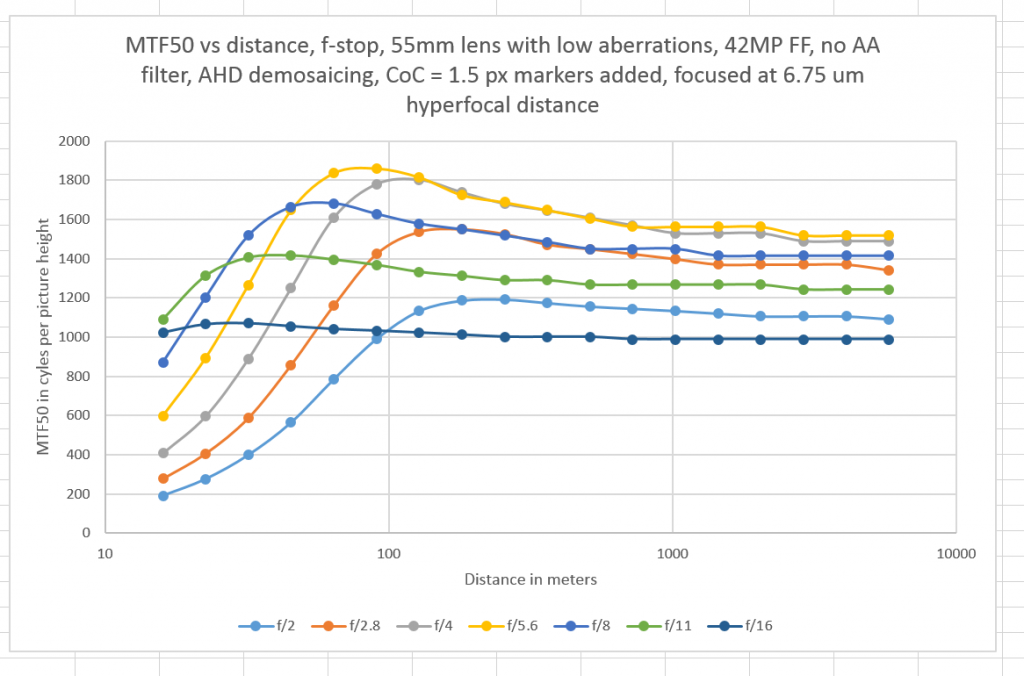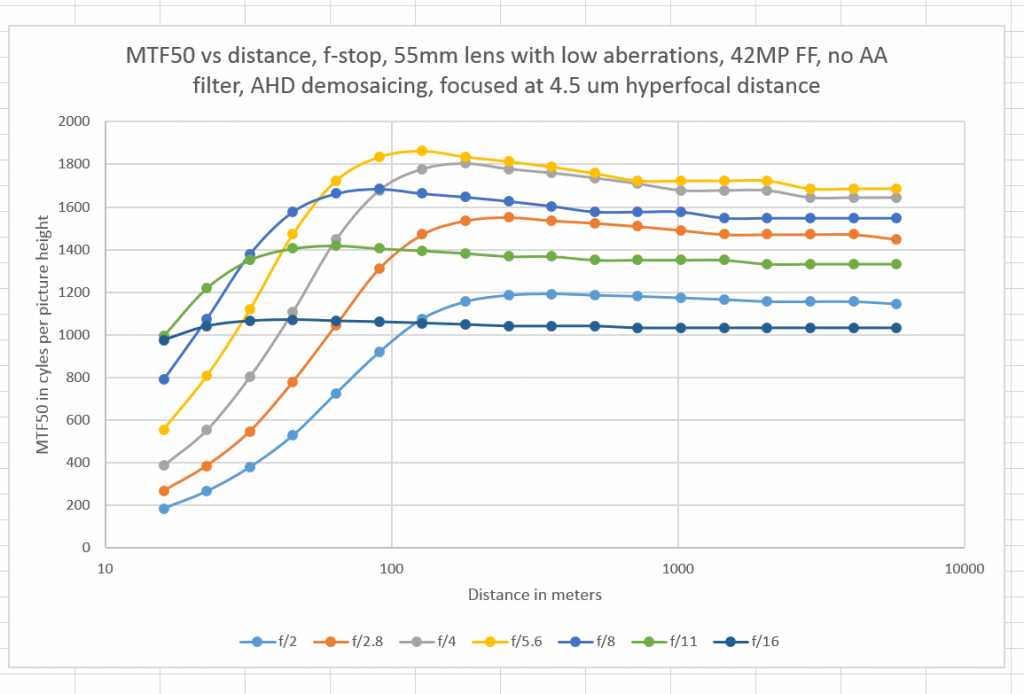This is a continuation of a report on new ways to look at depth of field. The series starts here:
We looked yesterday at the distance sharpness implications for focusing at the hyperfocal distance with the standard 30 micrometer (um) circle of confusion (CoC), and they weren’t pretty:
Today, I’ll show you similar curves with the camera focused at the hyperfocal distance for more reasonable CoCs. I’ll start with what was my standard CoC for critical work before I began this deep dive into DOF, one and a half times the pixel pitch, which, for the Sony a7RII that I’m modeling here, is 6.75 um.
Those of you who have been following this series from the beginning can skip the next two paragraphs.
The horizontal axis of the graph is subject distance in meters. It’s a log to the base 10 scale, so a third of the way between 1 and 10 is about 2, and two-thirds is about 5. The vertical axis is MTF50 measured in cycles per picture height. The simulated sensor is 42 MP, 14 bit, full frame Bayer CFA with no AA filter, like the sensor in the Sony a7RII. Fill factor is 100%. I turned off all sources of noise (photon, read, PRNU) — they don’t affect slanted edge measurements much anyway, since the technique is intended to calibrate out noise. Diffraction is computed at 450, 550, and 650 nm for the respective blue, green, and red raw color planes. The CFA is Adobe RGB, and the illuminant is D65.
I’m using a lens blur model that I originally created a couple of years ago to approximate the on-axis behavior of the Zeiss Otus 55/1.4. Now that I have improved my focusing accuracy with a motorized rail and my target with a razor blade edge, I now realize that my Otus model is actually somewhat worse than the lens itself, particularly at wide apertures. Nevertheless, it can serve as a stand-in for very good, if not great, 55mm lenses.
For the sharpest f-stops there is a clear loss in distant sharpness and an increase in near sharpness as compared to just focusing at infinity. At f/11 and f/16, that penalty is small.
SOme people favor a finer CoC, the pixel pitch itself. Let’s see what that looks like:
For the sharpest f-stops there is a minor loss in distant sharpness and an increase in near sharpness as compared to infinity focusing. At f/11 and f/16, that penalty is small.


Focus stacking here we come? Looks to me like you have demonstrated that you can get infinity to 40-ish meters sharp at 6.75 um hyperfocal distance, but if you bring focus closer you lose distance resolution rapidly as you gain resolution under 40-ish meters. The natural next question is how few exposures, and at what combination of focal distance and aperature, are required to focus stack such that an image is sharp from ‘n’ < 40m to infinity….
I really enjoy your blog, very interesting analysis even when I can't always follow the details. You bring a unique mindset to imaging analysis that gives insights that are not easily, or perhaps ever, found in more typical photo blogs. Thank you for sharing.